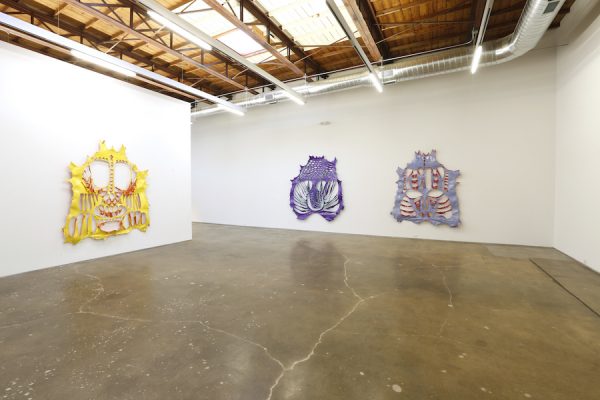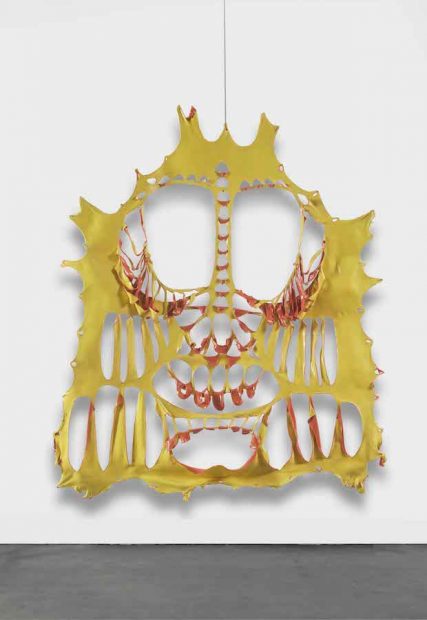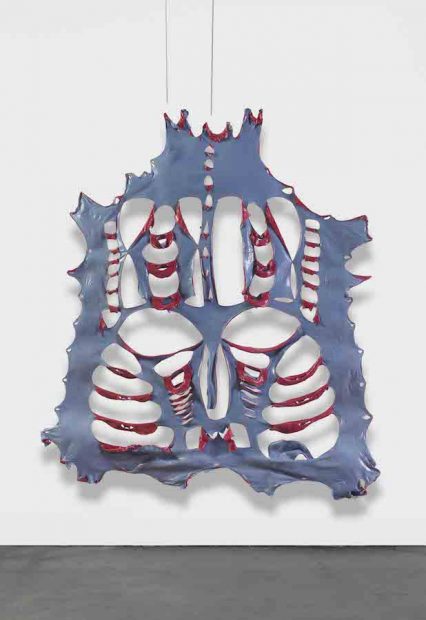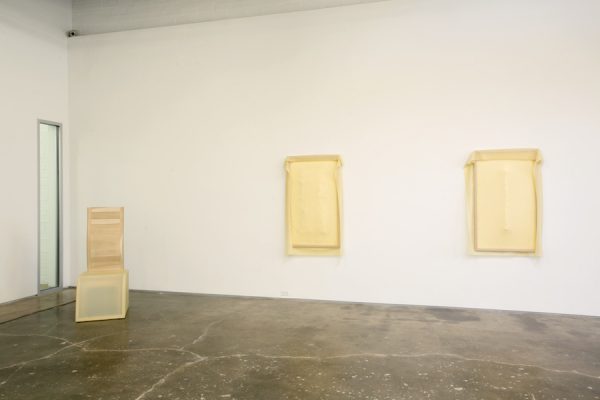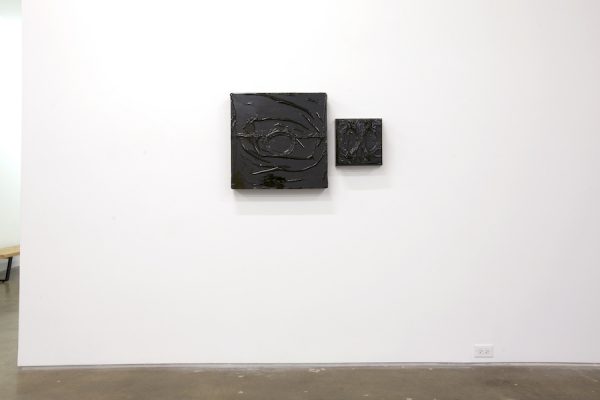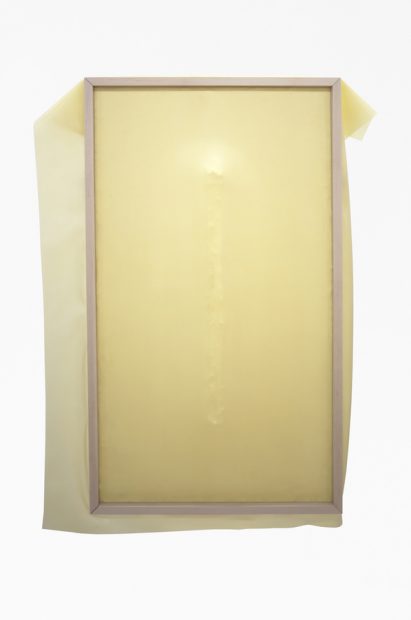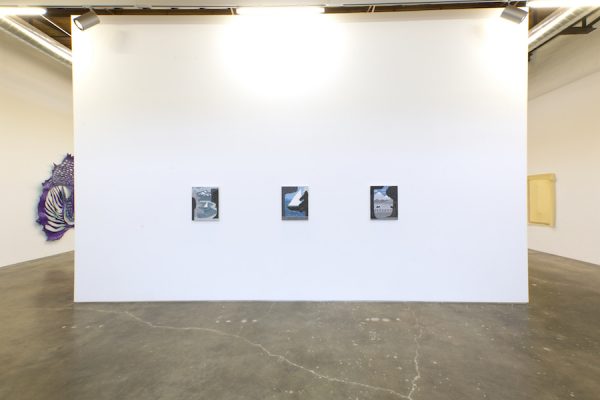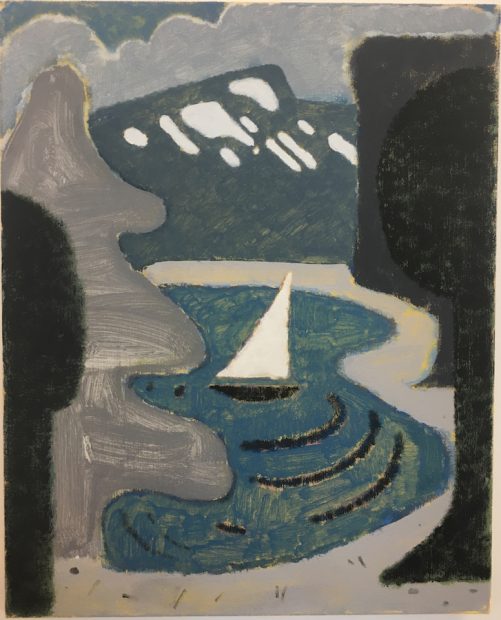SITE131 director and curator Joan Davidow shows strong, new work in her Dallas space — often by young artists, grouped under a simple theme. It’s one model of non-profit art space that puts on succinct, intelligent exhibitions that combine the better characteristics of a small museum and a commercial gallery. Davidow offers just a handful of shows a year, but gives each one the space and time to sink deeper into the city than a standard gallery show. The current exhibition, Whole Cloth, matches up China’s Wu Jian’an with New York duo Material Lust and newly minted Texan, Brian Scott Campbell.
The theme here has to do with fabrication on a technical level and as idiom. And rather than aligning the works’ similarities, this grouping makes evident their differences. These three (technically four) artists communicate on separate emotional wavelengths, from whispering to shouting. It’s dynamic and jarring, but the venue and installation is cogent enough to hold them all in check, and to let us negotiate their real differences and kinships.
The term “whole cloth” has its roots in manufacturing practices, and jumps into vernacular in relation to cost cutting and false advertising. It originally references a full piece of fabric — the size of the loom it was woven on — and represents the rebirth of natural materials into a measurable product. Wu Jian’an’s “masks” point to a pre-industrial version of this raw material, while Material Lust explores its contemporary connotations. Brian Scott Campbell’s paintings connect with “whole cloth” in an idiomatic way.
The “masks” of Wu Jian’an are actually whole buffalo skins, varnished stiff and painstakingly painted artificial colors. They are imposing, horned objects poking off the wall like giant dried chrysanthemums: everything about them is aggressive from process to presentation. Their overall shape still retains the butterflied animal hide outline, with legs and neck flattened out into a symmetrical “face,” cut in a way that doesn’t remove any material — it just redistributes the tension, letting fleshy loops hang between taut webbing.
Mask – Wisteria Yellow is flayed into grimacing strips of red and yellow, with pointy appendages like ears flaps and nubs. The cut strips of flesh hang and fold over. They sag, twist and pucker, glistening with the sheen of freshly spilt offal. Wounds become decoration; nail holes hold their stretched positions in a frozen play between stress and release.
Their bi-color, front versus back, gives an “inside/outside” effect, playing up the broken barrier of skin in physical and psychological ways. You can see it in the slick colors of Mask – Violet Red, which dangle a bloody red out from behind the cool, gray-blue exterior, artificially amplifying an already abject spectacle.
The violence recorded in punctures, slashes, gouges and cuts, makes one wonder how the myriad references play out in different cultural landscapes: from the exotic and the tribal, to fast food, to scarification. Where one viewer may see the body of Our Lord, another sees a chicharrón.
These abject body references are also found in the work of Material Lust, who are Lauren Larson and Christian Swafford. Their works, ML 2 and ML 3 feel similarly corporeal, with glistening tar-black fabric wrapped around a square substrate. What appears to be the neck holes of t-shirts are bunched into the center; they are crudely geometric while evoking mucus membranes of one kind or another.
Their three other examples however are less gooey, more intellectual. The clean, elegant craftmanship of ML 19001 uses another “whole cloth,” this time latex, as a skin stretching over the lower part of a chair-like frame. Its flawless joinery and clean lines add to the strangeness of the object. Larson and Swafford come to their art from the design world, and seem to understand the psychological power of manufactured materials. ML 19007 and ML 19008 both use a sleek wooden frame to stretch and pin latex over Freudian bulges on the plaster wall. The clean, sterile materials try to contain an unruly unknown.
Shielded by a freestanding wall, as if needing protection, are the small, unassuming canvasses of Brian Scott Campbell. Campbell is a recent addition to the painting faculty at the University of North Texas, and the only artist in the show using pictorial strategies. He paints almost exclusively with flashe, a vinyl-based paint that dries flat and even. It can be thinned out to reveal underlayers and seems to capture the speed and fluidity of the hand. The evidence of Campbell’s mastery is in how little he feels compelled to “prove” it in the obvious ways. He focuses on the thinnest sliver of ground between materiality and pictoriality.
Campbell goofs around with the basics of perspective and breaks little rules here and there for specific and meaningful purposes. In Wake, a small sailboat and a snow-blotted mountain are cradled between offset tree silhouettes. The dull blue of the lake and chalky gray shore are smeared over yellow underpainting that flavors everything from underneath.
Breaker sets up a similar scenario, with darker trees and fence rails framing a far-off cabin on a sunny hill. But crumbs of color leak out around the edges of shapes and give them an indirect glow.
In Breakfast, a family of heavily outlined tree shapes crowd out a happy sky, colorless except for a yellow sun. These thinly swabbed scenes are more about the interplay of blotted lines, crackly texture, overlapping shapes, and value play than they are about imagery, which feels completely fabricated. Mountains and clouds have no direct or indirect reference to any particular mountain or cloud out in the world: just passing resemblances. These recurring motifs are excuses to form shapes on a rectangle.
Campbell’s work speaks a different language than the other artifacts in the room. The theme is ultimately broad enough to house all the work, even where it stretches to do so. In the end, Whole Cloth serves as a curatorial excuse for presenting new compelling work together in the same room. Sometimes an excuse is all one needs.
On view at SITE131, Dallas, through March 21.


